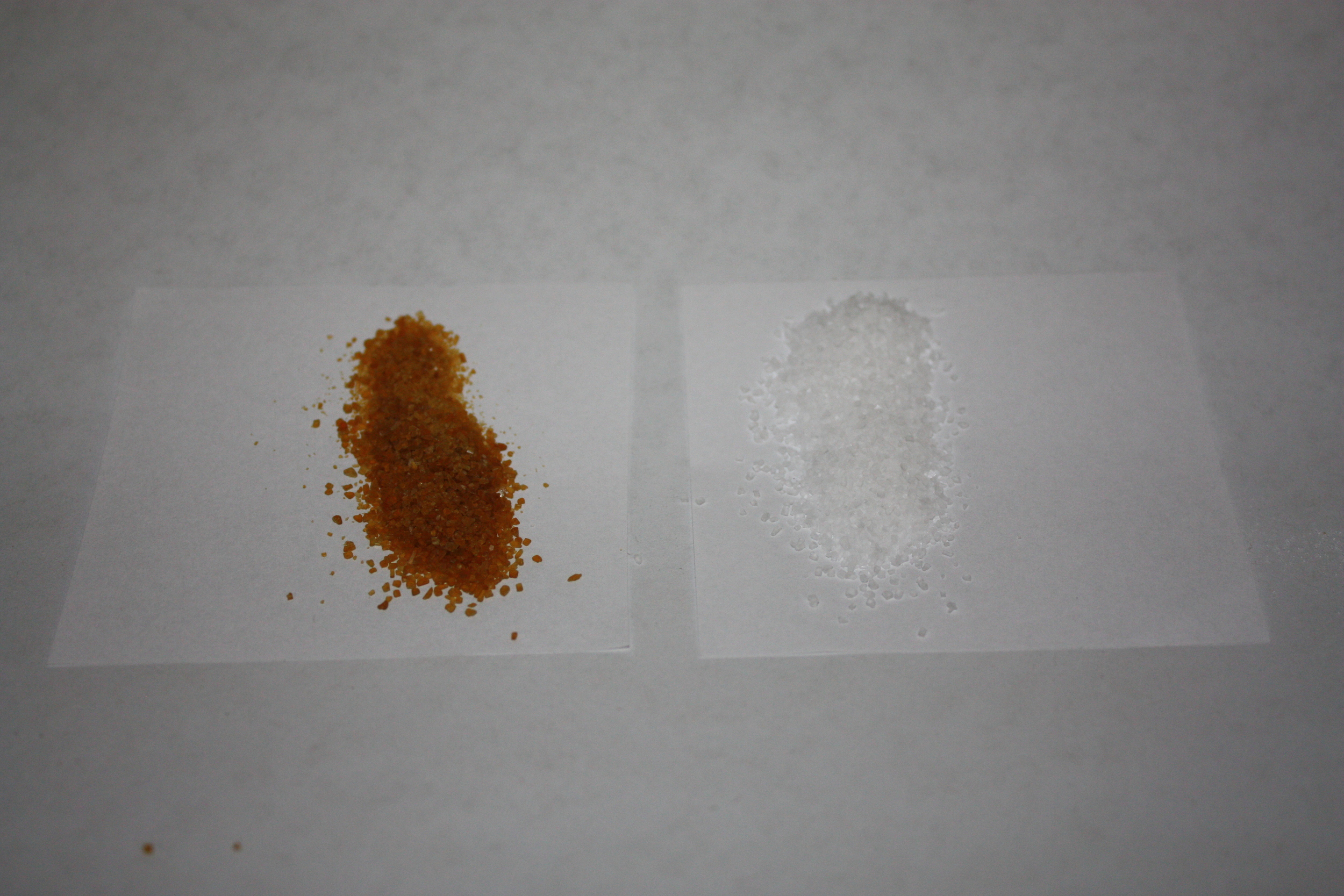Radioactivity is powerful force of nature, but it's a force who's presence is generally invisible in our everyday lives. However, when materials undergo irradiation with huge doses of ionizing radiation, either from long duration exposures to natural sources, or from artificial ones like the experiments below, they can exhibit some truly stunning changes of appearance. On this page is a catalog of the effects of high doses of ionizing radiation on materials. These experiments give a glimpse into how ionizing radiation interacts with matter, and how that matter behaves on the atomic and molecular level.
At these high doses, on the order of a thousand times the median lethal dose for a human being, materials undergo fascinating changes in their electronic and chemical structures. Some of these changes have been noted before and some are new, but by replicating a phenomenon that occurs over long geological time scales beneath our feet, I was able to make intriguing discoveries along the way.
Gamma Photons at ~700,000 electron volts (eV) cannot induce nuclear effects in a sample, and they do not leave the samples radioactive after irradiation. However, these high energy photons, and more specifically the Compton scattered electrons they create, can induce atomic or chemical effects in materials. Compton scattering is an inelastic interaction of high energy photons with electrons in which the photons transfer a portion of their energy to the charged electrons, causing it to recoil. This is analogous to the Photoelectric effect that occurs at lower photon energies. In metals, without a defined band gap, these scattered electrons simply occupy the same conduction band without any discernible change in the materials properties. However in insulators and semiconductors with a large band gap these electrons can be ejected and become trapped.

In many of the crystalline salts you will see below, the visible changes are from the formation of color centers (F-Centers and H-Centers). F and H Centers are essentially opposite effects: F Centers are electron containing voids in a periodic crystal lattice and form when an ion is ejected and a free electron fills the charge hole in the lattice. These trapped electrons tend to absorb light in the visible spectrum, thus changing the color of the crystal. H Centers are the interstitial ions that were ejected and also absorb light. One last related effect is that of metallic colloidal particles. These form when ejected ions recombine with electrons to neutralize themselves. These recombined neutral atoms occasionally combine to form microscopic metallic particles in the crystalline lattice and this can lead to a change in the crystal as the defects start to heal themselves.
Two additional processes may take place that cause the changes in appearance seen below. In organic materials, such as plastics, the gamma radiation will induce either the breaking or creation of covalent bonds, this may cause the materials to darken, degrade, or sometimes improve, as is the case with cross-linking in polymers. Additionally in inorganic materials, metal ion impurities may gain or lose electrons changing their oxidation state and thus their outward appearance. This effect can be seen in the purple glass changes below, and is distinct from the F and H center formations seen in the salts.
With all these inorganic materials, the defect that occurs from the gamma irradiation is reversible through heating or exposure to ambient light, with some materials being more sensitive than others. This annealing effect causes trapped electrons to return to their ground state, and the light emitted during this process is known as Thermoluminescence. You can learn more about Thermoluminescence below.
Room Temperature Thermoluminescence
Ionic Salts
Ionic Halide salts exhibit many spectacular color changes after gamma doses of 500 kilorads or more. These color changes typically arise from the formation of color centers. The below samples were all irradiated to a dose of 3,000,000 Rad (3 megarad) at which point the color change begins to saturate. This is a sampling of various alkali metals and alkaline earth metals with halogen anions.
Mineral and Gemstones
A few naturally occurring minerals irradiated with 3 megarad doses of gamma radiation. Many of these changes in visual appearance can occur due to natural irradiation from Uranium, Thorium, and Potassium over millennia in the environment. This irradiation is responsible for many unique mineral varieties including Smoky Quartz. One particularly unique mineral is described here: Kunzite - Lithium Aluminium Silicate, LiAl(SiO3)2
Quartz
Halite
Opal
Danburite
Fluorite - Calcium Fluoride (CaF2)
Topaz - Al2SiO4(F,OH)2
Glasses
Under Construction
















